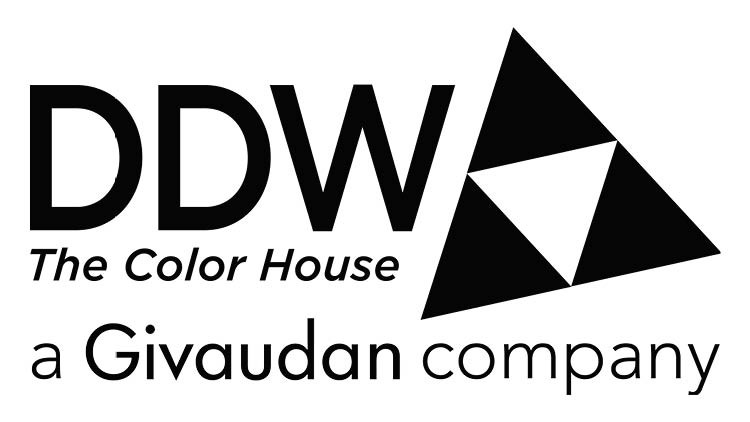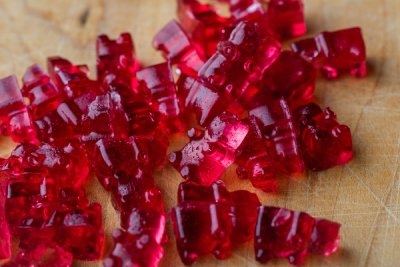Promotional Features
Natural Colors & Macrotrends: Creating Captivating Experiences for the Conscious Consumer
To satisfy the modern palate, food and drinks not only have to look and taste good, but they also need to deliver multi-sensory experiences that benefit the body, mind, and planet. And as consumers have higher expectations for the nutritional profile and the ethical implications of their food selections, this increases the complexity of developing these food experiences.
Consumer demand for recognizable ingredients in their foods and beverages has led to the widespread use of natural colors and coloring foods. But as companies adapt to provide products that fit in with other macrotrends in the industry, developers must now formulate with ingredients like non-standardized fruits and vegetables, fiber, and protein that can impact how natural colors perform in their matrix and still create enticing food experiences.
With some small adjustments, companies can use natural colors to elevate the visual impact of foods and drinks and captivate the attention of end consumers while still adapting to the following macrotrends.
Upcycling
Sustainability is something that consumers are looking to adopt into their everyday routines as concern for the climate intensifies. Since the pandemic, 58% of consumers are more aware of their ecological footprint . Food loss is one of the most concerning problems for authorities and the private sector, as well as consumers. In fact, 82% of consumers surveyed globally say they’d be more likely to use a company that makes an effort to mitigate waste or recycle. Food loss threatens food security, increases greenhouse gas emissions, and impacts productivity, motivating efforts to formulate foods and drinks with upcycled plant material.
These materials can include non-aesthetic fruits and vegetables with substandard colors or odd shapes and sizes. Though these raw materials have the same nutritional value and flavor as their cosmetically preferred peers, the lack of standardization can negatively impact the visual aspect of the end products.
Upcycled ingredients may also consist of plant parts and residues of agro-industrial activities – such as spent grains from brewing or exhausted tea leaves. These parts are not usually consumed but have become attractive because they provide nutritional benefits or can perform technological functions, like emulsification. But these ingredients may also affect the shade of the formulated food or drink.
Sauces, soups, smoothies, and plant-based preparations using upcycled plant material will benefit immensely with the appropriate color design. Natural pigment sources like carotenoids or anthocyanins have great consumer recognition and can be added to help achieve a standard shade and intensity in the end product. By adjusting the dosage of the color by batch to hit a target shade, they can also help achieve lot consistency, offering realistic shades that optimize the sensory experience by fulfilling consumer expectations about flavor-color match.
Additionally, upcycled vegetables have all the nutritional properties and delicious taste of select versions, but may lack a bit of color. Using natural colors to standardize foods made with upcycled material can bring out the vibrant, premium look that consumers expect.
Fiber Fortification
61% of consumers globally say “healthier living” means following a healthy, nutritious diet and half of consumers surveyed are interested in having fiber in their foods and beverages. This means increasing fiber content in the diet and an increase in the number of fiber claims in an expanding number of food categories. This trending claim promises benefits like bowel regulation, modulation of digestion and absorption, and prebiotic functionality. But the use of ingredients with high fiber content poses a series of technical challenges for food formulation.
It’s obvious to think about fiber affecting texture, mouthfeel, or viscosity. But it also has an impact on the color of the food. Sources of fiber like oat bran or linseed meal, transfer their color to the food matrix, resulting in a dull, unappealing appearance. Natural colors work wonders in these food systems, compensating for the brown/gray undertones more vibrant food experiences. These vivid shades will also contrast with the dark hulls, increasing the perception of wholesomeness and freshness.
Inulin, on the other hand, is a soluble fiber that is much preferred in formulations since it does not increase viscosity significantly and is quite transparent in color. It does not affect the performance of natural colors, which appear as bright and intense as in the original matrix.
However, inulin does contribute to browning during prolonged cooking and baking, as it acts as a reducing sugar and can participate in Maillard reactions. This reaction can be beneficial in applications with traditionally brown flavors like chocolate or hazelnut, or in savory applications with flavors like BBQ or mushroom! In these cases, solutions such as Naturbrown® or caramel colors are a great option to strengthen and standardize the product color.
Protein Enrichment
Protein fortification is also predicted to remain an enduring trend. According to Innova, 27% of consumers surveyed globally said they had increased their protein intake in the last 12 months. This includes consumers seeking functional foods and beverages, promoting benefits like muscle building, weight management, wellness, and satiety.
While there is preference for plant-based sources – hybrid formulations are also being explored by food designers. As in the case of fiber, protein has intrinsic color, and its chemical properties may also modify the appearance of the end product.
On one hand, protein concentrates manufactured through acid leaching or heat denaturation tend to be dark in color, which in turn gives a brownish or greyish background to the food matrix. Isolates also may have intrinsic colors attributable to the source and extraction method. For example, pea protein isolate can have a slight greenish-yellow hue and can interfere with the resulting shade of the food. On the other hand, food fortification with any amino acid source, in the presence of reducing sugars, will intensify Maillard reactions causing even darker colors after cooking or baking. Both factors must be accounted for when deciding the type and dose of color required to mask or enhance the appearance of protein fortified end products.
The plant-based market is one of the largest segments for added protein claims, and with 39% of adults saying they currently eat some type of meat alternative product, it’s vital to create enticing experiences for the consumer. The use of bright orange colors like paprika or annatto help reduce grey undertones, while the addition of brown and pink hues help to achieve the so desired raw to cooked effect. Even protein fortified beverages can benefit from heat stable colors like annatto, curcumin, or caramels, delivering the expected cues for the chosen flavor.
Regardless of the product or macrotrend, natural colors offer an enhancing tool that can communicate valuable traits like freshness, flavor identity, intensity, and deliciousness and help achieve desired claims.



